The Lucy of modern fit bikes
The Exit bike was the granddaddy of all these bikes. It was the first bike built to export stack and reach; the first to adjust front and rear in an x/y axis; the first with an incliner; and as far as I can remember the first x/y adjustable fit bike to use a Computrainer as a resistance unit. (The bike can be outfitted with either a Computrainer or a CycleOps Powerbeam as the resistance unit, this bike pictured here uses a Powerbeam.)
The latest fit bike from Exit Cycling will set you back $8000. This bike doesn’t have it all. But checks all the boxes, that is, it has all the mandatory features currently available. It’s got 4 handwheels, and it reads stack and reach. It’s got a 5th handwheel down at the front crosspiece, near floor level, and that’s the incliner. All the handwheels take a page from Purely Custom, with a twist. The bolt affixing the handwheel is a hex bolt – 5/8” – and you can either turn the handwheel or you can spin it with a cordless drill affixed with a 5/8” hex driver.
Exit bikes come in a variety of configurations. The version with which most fitters are familiar does not use handwheels, and I differentiate between 4 methods of actuating saddle and handlebar movement: slide, handwheel, external motor, integrated motor. Prior Exit bikes utilized the slide method, and of all the bikes here these slide actuating bikes are the least expensive (a complete slide-actuated Exit, with Computrainer and adjustable cranks is about $5,950). The image at the bottom shows the slide model in front of the handwheel model.
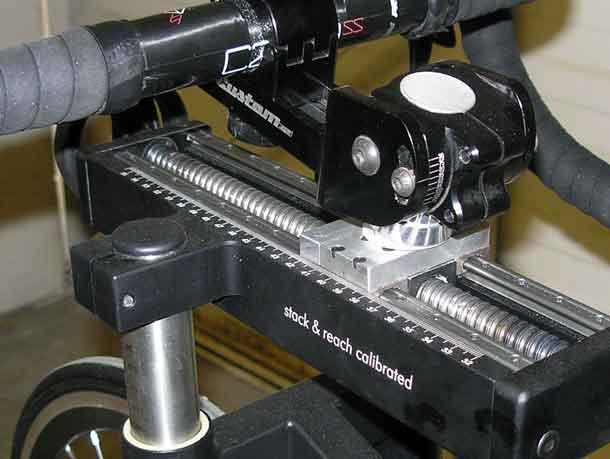
An intermediate model would be a slide actuated Exit bike with a handwheel incliner, and this would cost about $6,700. One nice thing about this model: Paul Swift’s SwitchIt – a very nifty quick change saddle changer – is made precisely for this model of bike. There’s a bottom platform that can be taken off the SwitchIt, allowing the SwitchIt to bolt directly to the slide actuated Exit bike. That bike, with a handwheel incliner, Computrainer aboard, SwitchIt aboard, would cost about $7,600. That’s about the smallest price you can pay for a bike that does everything you need.

There is one overwhelming reason that shops tend to like the Exit Cycling bike, and this is the case whether it’s the simplest, slide-driven, least expensive model up to this newest handwheel model: its portability. This specific bike pictured here was at the Profile Design booth at the latest Interbike trade show. I needed a fit bike to use as a prop for a clinic I gave at the Triathlon Pavilion. I picked up the back end of this bike and rolled it, like a wheelbarrow, on the front wheel to the Pavilion. Just about any adult, of any strength, of either gender, can do this with this bike. This makes it easy to demo the fit process at expos and tri and bike club meetings, and to move the bike around a retail shop as needed.
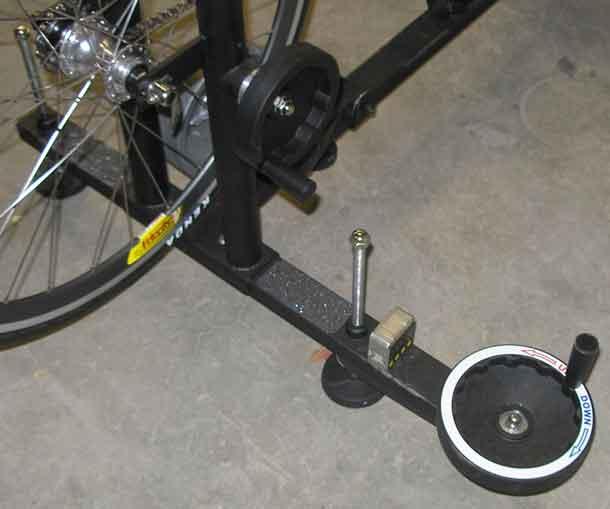
One of the images in this series shows how you read both stack and reach off the Exit bike. In this case, you can read that the reach is 396mm and the stack is about 510mm. Any good fitter knows immediately what the problem is. There is no bike even close to this geometry. The closest might be a Felt F Series, in size 54cm, with a stack of 527mm and a reach of 389mm. So, hopefully no fitter ends up with this as the position chosen for his customer. In point of fact, I lowered the front end of the bike so that I could get a pic of both stack and reach easily seen. Were this a tri bike fit, no problem. A new Orbea Ordu, in size 51cm, has a stack and reach of 501mm and 395mm respectively. Tilt that splined stem up a little bit and, presto, a great fit.
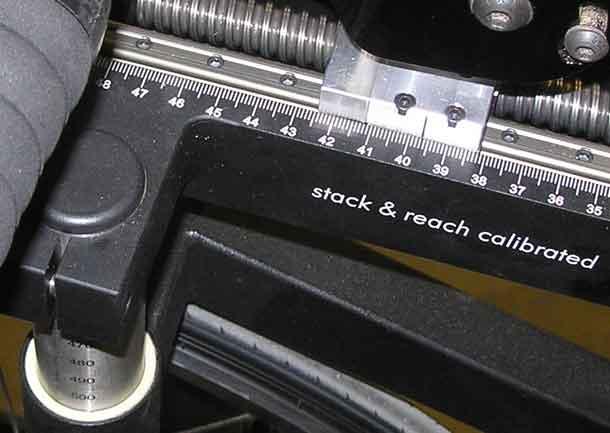
What you see on the Exit bike pictured here is a Computrainer adjustable crank, and a Purely Custom adjustable stem. This bike typically sells with a Purely Custom adjustable crank, and no stem. You either put just a regular stem on the bike, or you can use an adjustable stem like this one shown. Realize that this is the motif used by Retul Muve and Exit Cycling. These bikes read stack and reach. The Guru, Purely Custom and Shimano do not read stack and reach, they reach x and y to the handlebar clamp, and you calculate stack and reach. No problem.
Neither way is better. I can fit using either. Either method is compatible with the F.I.S.T. Protocol we teach and espouse. There is one advantage to a bike that reads stack and reach: fitters can know, at any point along the fit, precisely what bike fits underneath that position.
This 5-handwheel Exit Cycling model is new. It’s shipping next month. I like it. The only thing I’m iffy about is the saddle clamping mechanism. It’s new and I’m just trying to get the hang of it. In all likelihood I’ll slap a SwitchIt on there and that’ll be that. Just, for those interested, this is the one feature I need to use more before I opine on it with any authority.
This is one of the bikes you can buy on time, over 18 months (from New Dog, LLC, the fit tool financing operation in which I – full disclosure – am a partner). This bike with a SwitchIt would is a tight little machine.
Exit Cycling began the modern trend in fit bikes. The Guru bike you see today is modeled after an original, slide-activated, Exit Cycling fit bike. It’s still the most compact, versatile, lightweight, portable, yet full-featured fit bike available.
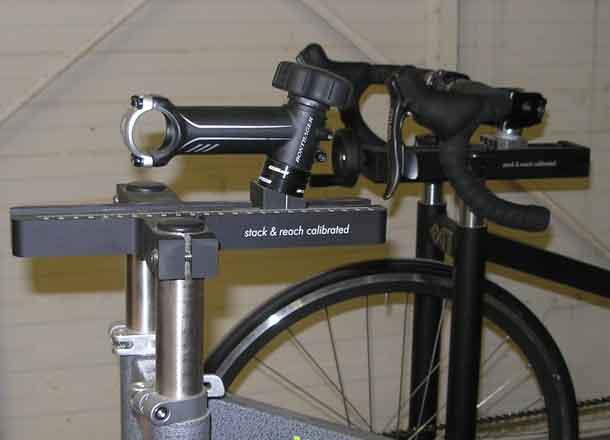
This is the last of the 5 fit bikes reviewed for this series. I'll put a coda on this tomorrow, predicting what I think is coming, and what among all these bikes represents both the best bike and the best value, depending on what's important to the fitter.
What consumers need to know is that any of the fit bikes reviewed in this series will deliver a first-class fit. A really good fitter will deliver a really good fit aboard any of these 5 bikes. Some of these bikes have specific advantages, and some are built on platforms that allow for future improvements. But all these bikes make the cut.
Now, none of these bikes will make a great fitter out of a good one, or a good fitter out of a mediocre one. But no great fitter can deliver, in my opinion, his best work without one of these five bikes, or some other tool of which I'm unaware that does what these tools do.


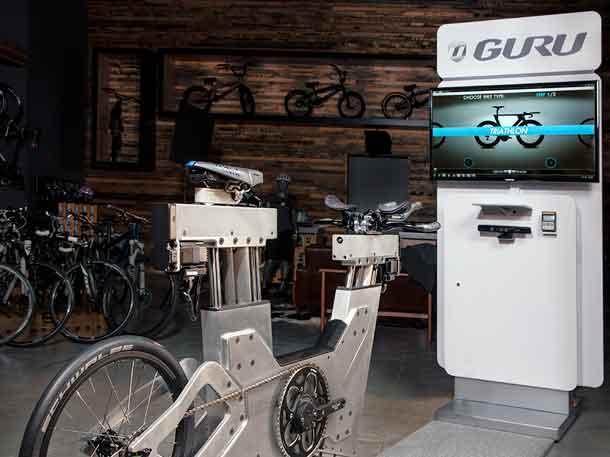
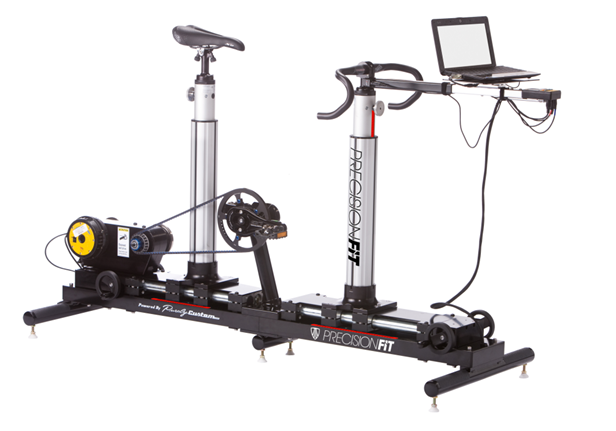
Start the discussion at slowtwitch.northend.network